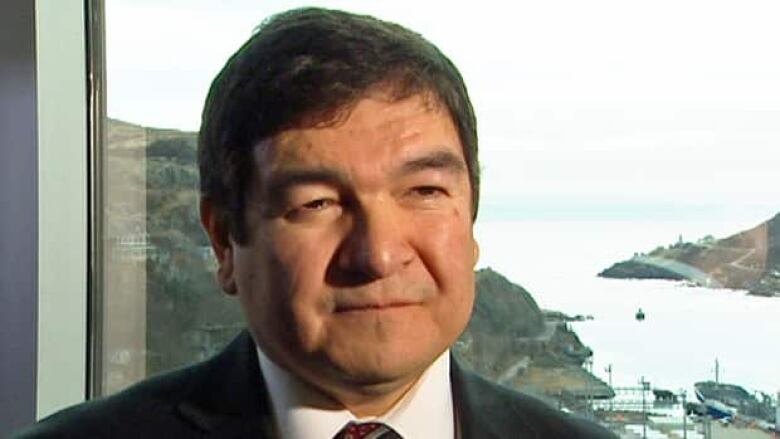Questions remain after Penashue resigns as Labrador MP
Former Labrador MP pays government more than $44,000 to cover 'ineligible' contributions

UPDATE: Newly released documents, made public shortly after this story was published, answer some of the questions below.
Peter Penashue stepped down fromthe federal cabinet and resigned his Labrador seat in the House of Commons Thursday, while announcing he has paid the government $30,000 to cover "ineligible" contributions to his 2011 election campaign.
But newly released documents showit was actually closer to $45,000.
Questions about his campaign financing and donations have for months dogged Penashue, who held the intergovernmental affairs portfolio and was president of the Privy Council.
But in the wake of his resignation and pledge to run again ina byelection, the Conservative Party was refusing to answer questions that remained over where the money for the repayment came from, what it covers and whether he's paid back a loan from an Innu organization?
CBC News has submitted the first three of these questions tothe Conservative Partyspokesman and received a one-line response.
"The campaign reimbursed the Receiver General [of Canada] for the ineligible contributions received," Fred DeLorey said in an email.
1. Where did the money come from?
A few months after the election, Penashue's campaign had just $3,963.52 in the bank, with $15,000 owing to Innu Development Limited Partnership, according to records in Penashue's Elections Canada file. IDLP, which was then run by Penashue's brother-in-law, Paul Rich, had loaned the campaign $25,000. Before that loan, the campaign had bounced cheques and wasn't able to cover its costs.
Where didthe Penashue campaignget the $30,000 to repay the federal government for the illegal donations? It could have come through fundraising or through transfers from the party or another riding associationbut that's a question the party hasn't yet answered.
UPDATE:The newly public records show the total Penashue's campaignpaid was $45,560, and the ConservativeParty transferred $44,350 to the campaign. The first payment was made almost five months ago, on Nov. 28.
The money wasn't returned to the people who made the contributions; instead,it went to the federal government through theReceiver General of Canada.
2. What doesthe $30,000cover?
No one has explained what the $30,000 payment covers. CBC News calculated Penashue's campaign got a discount from Provincial Airlinesof $17,711 on campaign flights. There's also a deposit slip that indicates the campaign took a $5,500 corporate donation from a construction company called Pennecon. That leaves another $6,800 or so in "ineligible contributions" that the party says Penashuehas nowaddressed.
UPDATE: The documents published on Elections Canada's website show which contributions weren't eligible as campaign donations. They include $18,710.54 in contributions-in-kind from Provincial Airlines andthe $5,500 cheque from Pennecon.
3. Has the loan from IDLP been repaid?
Elections Canada records showed Penashue's campaign repaid $10,000 on Aug. 24, 2011, a few months after the May 2, 2011 election. A letter from IDLP said the remaining $15,000 (there was no mention of any legally required interest) was to be returned in September 2011. But a year later the campaignby then under a new official agent asked for an extension, saying it would likely need until this May. Has the loan now been repaid, and if so, where did that money come from?
UPDATE: The documents show only the $10,000 repayment to IDLP. Arecord for the loan shows a seven per cent interest rate.
4. How does the $30,000 payment affect his campaign spending total?
The $30,000 Penashue admits was ineligibleis a big chunk of his total allowed spendingfor the campaign. Candidates in Labrador were allowed a maximum of $84,468.09 in campaign expenses in 2011, and according to a CBC News calculation, his campaign overspent by about $17,000when the value of the flights was included. How does the $30,000 payment fit within the campaign spending limit?
5. Is the campaign's official agent facing anyfallout from Elections Canada?
While the candidate is responsible and has to sign off on the campaign records sent to Elections Canada, it's the official agent who handles all the paperwork during the campaign. Penashue has blamed his formerofficial agent, Reginald Bowers, for being inexperienced and accepting the illegal donations (a spokesman for Penashue said last fall that Penashue instructed the campaign not to take any corporate donations). Is Elections Canada going to hold Bowers to account for the errors he may have made?












_(720p).jpg)


 OFFICIAL HD MUSIC VIDEO.jpg)
.jpg)



























































































